
HDMS Sælen (S323) is one of the three Tumleren-class small coastal submarines of the Royal Danish Navy.

The Royal Danish Navy is the sea-based branch of the Danish Armed Forces force. The RDN is mainly responsible for maritime defence and maintaining the sovereignty of Danish territorial waters. Other tasks include surveillance, search and rescue, icebreaking, oil spill recovery and prevention as well as contributions to international tasks and forces.

Peder Skram was a Danish Admiral and naval hero.

Herluf Trolle was a Danish naval hero, Admiral of the Fleet and co-founder of Herlufsholm School, a private boarding school at Næstved on the island of Zealand in Denmark.

HDMS Peder Skram (F352) was a Peder Skram-class frigate in the Royal Danish Navy which was in use until 1990. It is now docked at Holmen in Copenhagen where it serves as a privately operated museum ship along with the ships of the Royal Danish Naval Museum. The ship is named after Peder Skram, a 16th-century Danish admiral.

The Peder Skram-class frigate was a class of frigates built for the Royal Danish Navy in the period 1964–1967. Only two vessels in this class were ever constructed, Peder Skram (F352) and Herluf Trolle (F353). The ships were named after Danish admirals Peder Skram and Herluf Trolle

Mastekranen is an 18th-century masting sheer and present landmark on Holmen in Copenhagen, Denmark. It was designed by architect Philip de Lange and built in 1748–51 as part of the Royal Naval Shipyard at Holmen.

The Danish ironclad Peder Skram was originally laid down as a wooden steam frigate for the Royal Danish Navy, but was converted to an armored frigate while under construction in the early 1860s. She had an uneventful career before she was stricken from the Navy List on 7 December 1885. The ship was converted into an accommodation ship that year and was broken up in 1897.

The Herluf Trolle class was a class of coastal defence ships of the Royal Danish Navy. The class comprised Herluf Trolle, Olfert Fischer and Peder Skram.
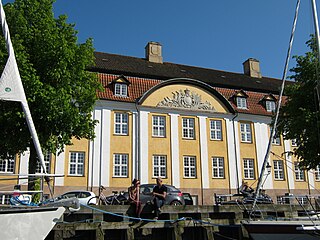
The Royal Danish Naval Museum is a museum dedicated to the history of the Royal Danish Navy. The displays include a collection of naval models which dates back to late 17th century. The museum is based in Søkvæsthuset, a former naval hospice which overlooks Christianshavn Canal.
Events from the 1560s in Denmark.

HDMS Niels Juel was a training ship built for the Royal Danish Navy between 1914 and 1923. Originally designed before World War I as a monitor, construction was slowed by the war and she was redesigned as a training cruiser. Completed in 1923 she made training cruises to the Black and Mediterranean Seas, South America and numerous shorter visits to ports in northern Europe. The ship often served as a flagship and occasionally was used as a royal yacht for visits to overseas possessions and other countries.
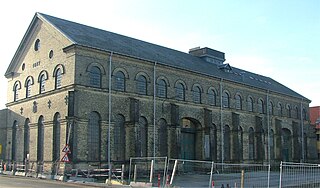
Orlogsværftet was a Danish naval shipyard under the Royal Danish Navy. Before 1924, it was an integral part of the naval base at Holmen in central Copenhagen, Denmark, with an independent management from 1692 when Olaus Judichær became the first factory director.
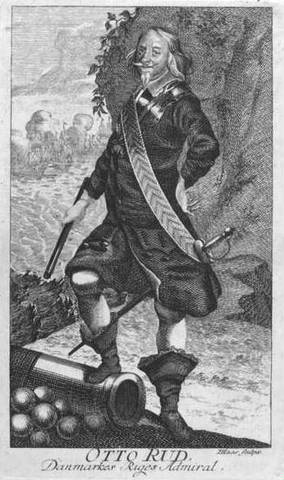
Otte Ruud, born 1520, died 1565, was a Danish-Norwegian admiral during the Northern Seven Years' War, who died in Swedish captivity. He spent his youth in foreign military service, and then held different fiefs from the King. Called up to duty during the war, he at first distinguished himself at land, later becoming a ship's captain, and finally admiral commanding the Danish fleet.
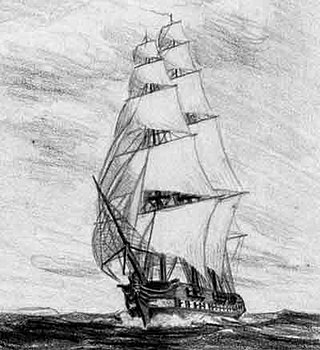
HDMS Bellona was a frigate of the Royal Danish Navy, which she served from 1835 to 1862.

HDMS Justitia was a Royal Dano-Norwegian Navy ship-of-the-line, built to a design by Henrik Gerner. Although launched in 1777, she was not fully commissioned until 1780. The British Royal Navy seized her in 1807, together with the rest of the Danish fleet after the second battle of Copenhagen. The British never commissioned Justitia. A renaming to Orford in 1809 was cancelled. She was broken up in 1817.
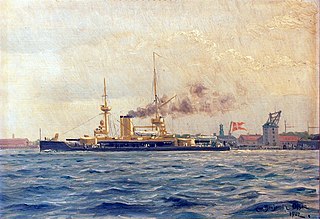
HDMS Herluf Trolle was the lead ship of the Herluf Trolle class of coastal defense ships built for the Royal Danish Navy. The Herluf Trolle class was built in response to a naval construction program in neighboring Imperial Germany. The Danish ships were built in the late 1890s and early 1900s. They were armed with a main battery of two 240 mm (9.4 in) guns and were capable of a top speed of 15.5 knots. Because she was intended to operate as part of a solely defensive naval strategy, Herluf Trolle had a fairly uneventful career. She visited Britain in 1902 to represent Denmark at the coronation of Edward VII and Alexandra. During World War I, Denmark remained neutral and Herluf Trolle was assigned to the defense forces that guarded Danish territorial waters. Sharply reduced naval budgets in the 1920s and 1930s curtailed further activities, and in 1932, she was discarded for scrap.

HDMS Olfert Fischer was the second member of the Herluf Trolle class of coastal defense ships built for the Royal Danish Navy. The Herluf Trolle class was built in response to a naval construction program in neighboring Imperial Germany. The Danish ships were built in the late 1890s and early 1900s. They were armed with a main battery of two 240 mm (9.4 in) guns and were capable of a top speed of 15.5 knots. Because she was intended to operate as part of a solely defensive naval strategy, Olfert Fischer had a fairly uneventful career. She visited Britain in 1911 to represent Denmark at the coronation of George V and Mary. During World War I, Denmark remained neutral and Olfert Fischer was assigned to the defense forces that guarded Danish territorial waters. Sharply reduced naval budgets in the 1920s and 1930s curtailed further activities, and Olfert Fischer saw little activity during this period, apart from testing a reconnaissance aircraft in 1922. She was eventually converted into a target ship and used for tests of aerial bombing of a ship underway in October 1936, before being sold for scrap immediately thereafter.
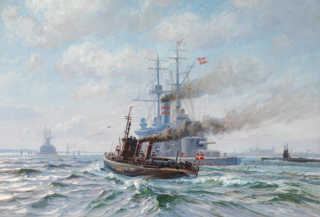
HDMS Peder Skram was the third and final member of the Herluf Trolle class of coastal defense ships built for the Royal Danish Navy. The Herluf Trolle class was built in response to a naval construction program in neighboring Imperial Germany. The Danish ships were built in the late 1890s and early 1900s; Peder Skram was delayed significantly compared to her sisters, and was laid down in 1905, after her two sister ships had already been completed. The ships were armed with a main battery of two 240 mm (9.4 in) guns and were capable of a top speed of 15.5 knots.




















